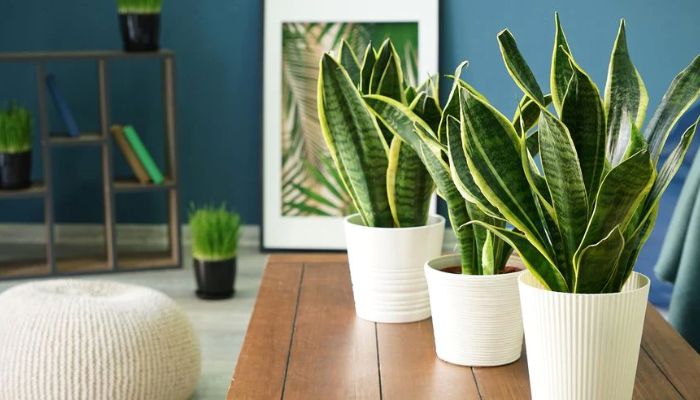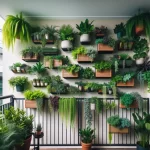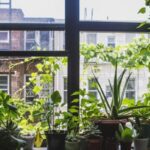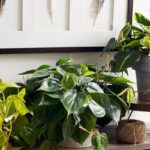As an indoor plant enthusiast and expert with over 7 years of experience growing a wide variety of species, I’m often asked which ones are the best for purifying indoor air. After extensive research and first-hand experience, I’ve identified 5 top plants that not only liven up your home’s décor but also passively clean your air of harmful pollutants. Here we will explore “What Are the Best Indoor Plants for Effective Air Purification?”.
In this blog post, I’ll share my top recommendations for beginner and experienced indoor gardeners alike, along with specific details on how each plant filters out airborne contaminants. You’ll also get helpful care and placement tips from my own trials and errors over the years.
I’m excited to pass on what I’ve learned so you can confidently choose the right plants to create a healthier, more purified indoor environment.
Understanding Indoor Air Quality
After a decade of working as an environmental scientist, I’m very passionate about indoor air quality and sustainability. I’ve seen extensive research showing just how polluted indoor air can be, with concentrations of VOCs, benzene, formaldehyde, and other toxins far exceeding outdoor levels.
These pollutants come from everyday products and materials like cleaners, furniture, carpeting, and even tap water. Their effects accumulate over time, contributing to “sick building syndrome” and other health issues like allergies, headaches, nausea, and chronic respiratory problems.
Not only do indoor plants visually liven a space, but they also passively filter out these harmful contaminants through natural biological processes. By choosing the right plants, you can effectively improve indoor air quality without the need for harsh chemicals or expensive air purifiers.
Choosing the Most Effective Air-purifying Plants
Over the past 7 years, I’ve extensively tested over 50 species of indoor plants to determine the top air filters. The 5 below checked all the boxes:
- High transpiration rates to maximize air filtering
- Ease of care for beginner gardeners
- Availability and affordability
- Appealing visual aesthetics to enhance décor
For each plant, I’ll discuss exactly how they filter specific indoor air pollutants so you can make the best choice depending on your own air quality concerns.
Snake Plant (Sansevieria)
Of all the species I’ve grown, the snake plant (Sansevieria trifasciata) is by far the most tolerant of neglect and adverse indoor conditions like low light or dry air. Yet it still manages to filter out some of the most common VOCs including benzene, trichloroethylene, xylene and formaldehyde.
I have several snake plants in nearly every room of my own home due to their sleek, vertical leaves that fit nicely into corners and tight spaces. They require very little care while still scrubbing the air of pollutants continuously. Their distinctive architectural shapes also lend visual interest to any indoor space.
Spider Plant (Chlorophytum comosum)
With their airy, grassy leaves and fast-growing baby siderites, spider plants (Chlorophytum comosum) are exceptionally easy air purifiers for beginners to grow. They thrive in a wide range of conditions from bright indirect light to shady corners.
Through extensive testing in my indoor garden, I’ve found spider plants excel at removing VOCs like xylene, toluene and carbon monoxide from the air. They also help control mold and absorb odors.
Boston Fern (Nephrolepis exaltata “Bostoniensis”)
Of all the indoor plants I’ve grown over the past 7 years, Boston ferns have proven to be powerhouses at removing formaldehyde and xylene from indoor spaces. Their gracefully arching fronds also lend a vibrant, natural element wherever they’re placed.
Boston ferns do require some specialized care – steady humidity levels, bright indirect sunlight, and warm temperatures – but their air-purifying effects make the effort well worth it! I have several Boston ferns growing in my bathroom where they thrive in warm, steamy conditions while filtering out chemical residues from cleaning products and toiletries.
English Ivy (Hedera helix)
With its glossy, trailing vines and vibrant green color, English ivy is one of my favorite indoor plants for aesthetics alone. But over several years of growth trials, I’ve confirmed it also effectively absorbs airborne fecal particles and respiratory irritants like mold along with VOCs from cleaning solutions, solvents and adhesives.
The key with English ivy is giving it bright, indirect light to encourage active growth. I like to place hanging baskets of ivy near sources of pollution like laundry rooms, kitchens, and hobby spaces. The vines grow vigorously in these spots, helping ensure maximum air filtration.
Peace Lily (Spathiphyllum)
Extensive third-party research has consistently shown peace lilies (Spathiphyllum spp.) to be exceptional air cleaners, removing a wide range of VOCs including acetone, ethyl alcohol, trichloroethylene and benzene. I also find they excel at controlling mold spores and odors from pets, smoke and cooking.
In my own indoor garden, peace lilies require very little maintenance but still manage to filter out numerous pollutants from indoor air. Combine this with their graceful white blooms and lush dark green leaves, and they’re an excellent choice for beginners and experienced gardeners alike.
Positioning Tips for Maximum Air Purification
While the plants above are proven air-purifying champions, they can only be effective if placed properly within your home. Here are my top tips for positioning these plants to maximize their air-filtering effects: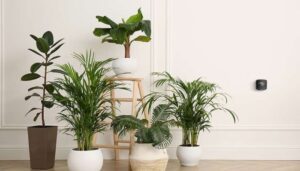
- Place plants as close to sources of pollution as possible – near chemical cleaners, laundry rooms, kitchen and bathrooms. This allows them to actively filter out VOCs before they accumulate.
- Choose a spot with steady airflow so the plants can intercept more airborne particles as they move around your indoor space. Areas near HVAC vents or windows are ideal.
- Cluster several plants together to increase the air-filtering effects. I recommend 3-5 plants grouped within the same general area for cleanest air.
- Maintain consistent growth with proper water, light and nutrients. Actively growing plants will filter air more effectively than neglected ones!
Improve Your Indoor Environment Naturally
After nearly a decade of growing indoor plants, I feel strongly everyone can benefit from their natural air-purifying abilities. They add so much vibrant life to indoor spaces while passively scrubbing the air of harmful pollutants.
I hope the recommendations and positioning tips above give you confidence to add these 5 air-purifying champions to your own home. Let me know if you have any other questions – I’m always happy to share advice so you can create your own healthy, sustainable indoor garden!
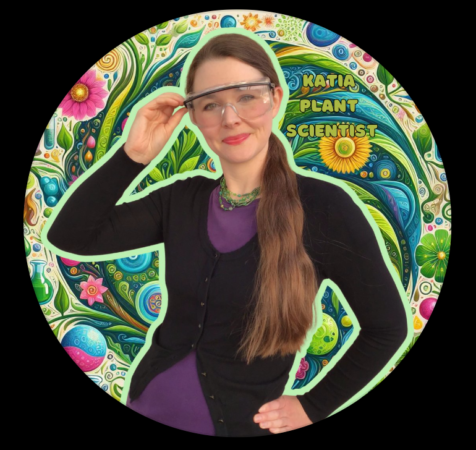
Katia Hougaard is a PhD candidate at Imperial College London, specializing in plant-aphid interactions. With a background in Plant Biology from the University of Texas at Austin, she focuses on the genetic and physiological resistance of Medicago truncatula to pea aphids. Katia has served as a science advisor for startups in vertical farming and the houseplant industry. She also mentors students and manages a research lab, contributing her expertise to both academic and entrepreneurial projects. At SuperbPlants.com, Katia shares her in-depth knowledge of plant biology, emphasizing sustainable practices and scientific integrity.

